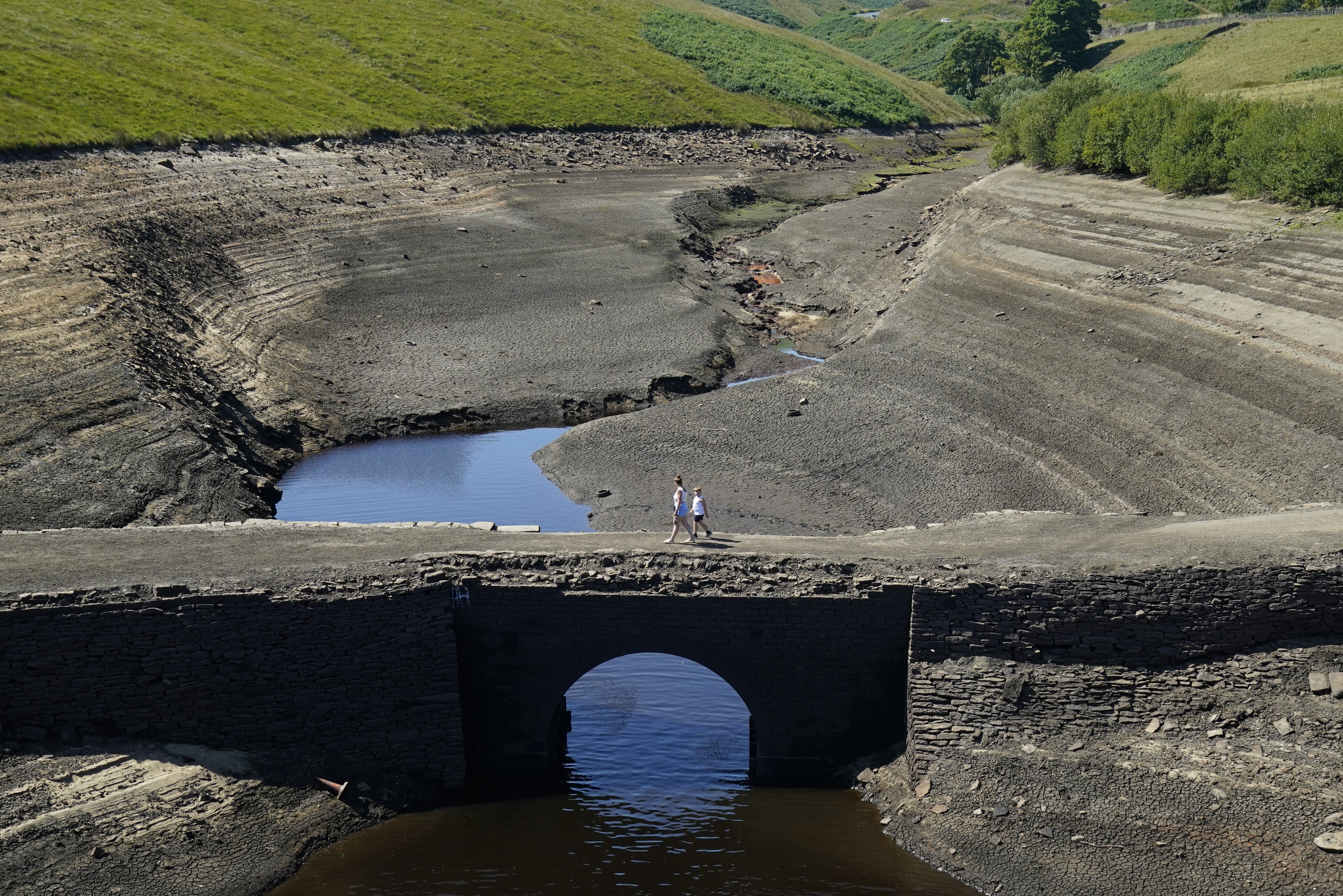Total water in England’s reservoirs is at lowest level since 1995
The amount has been falling steadily in recent months.

Your support helps us to tell the story
From reproductive rights to climate change to Big Tech, The Independent is on the ground when the story is developing. Whether it's investigating the financials of Elon Musk's pro-Trump PAC or producing our latest documentary, 'The A Word', which shines a light on the American women fighting for reproductive rights, we know how important it is to parse out the facts from the messaging.
At such a critical moment in US history, we need reporters on the ground. Your donation allows us to keep sending journalists to speak to both sides of the story.
The Independent is trusted by Americans across the entire political spectrum. And unlike many other quality news outlets, we choose not to lock Americans out of our reporting and analysis with paywalls. We believe quality journalism should be available to everyone, paid for by those who can afford it.
Your support makes all the difference.The amount of water held in England’s reservoirs stood at just 65% of total capacity at the end of last month – the lowest level for that point in the calendar year since 1995.
Most reservoirs are now classed as being “exceptionally low”, according to figures from the Environment Agency.
Water levels are lowest at Colliford reservoir in Cornwall, which is only 43% full, Stithians reservoir in Cornwall (44%) and the Derwent Valley reservoirs in Derbyshire (45%).
The Pennines group of reservoirs are at 49% capacity, as is the Wimbleball reservoir in Somerset.
Only four reservoir or reservoir groups are currently recording water levels that are classed as normal: Abberton in Essex (77%); Haweswater & Thirlmere in Cumbria (60%); the Lower Lee group in Hertfordshire and north London (88%); and the Teesdale group in north-east England (72%).
England’s total stock of reservoir water has fallen steadily in recent months, from 90% of capacity at the end of April to 85% by the end of May, 78% at the end of June and 65% by the end of last month.
Ardingly reservoir in West Sussex and Hanningfield reservoir in Essex both saw their water level drop by more than a fifth last month – the largest fall recorded by any reservoir or reservoir group.
River levels in July were classed as “exceptionally low” at more than a quarter of sites across England, the Environment Agency added.
These included the Cam in Cambridgeshire (which is now at 36% of its long-term average flow), the Swale in North Yorkshire (32%), the Wye in Gloucestershire (31%), and the Yare in Norfolk (30%).
The level of the Great Ouse at Denver in Norfolk has dropped to just 5% of the long-term average – the lowest July figure for this site since records began in 1970.